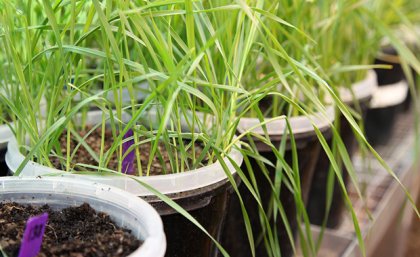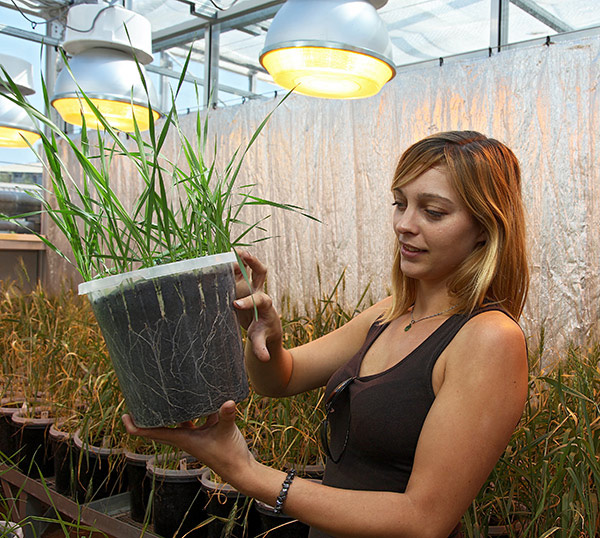
A University of Queensland scientist has developed a method to help grain growers become more resilient to expected changes in climate.
PhD candidate Cecile Richard’s cheap and simple technique allows scientists to better adapt grain crops such as wheat to drought conditions.
The method uses a system of clear plastic pots, which allows scientists to see through the pot wall and view the roots of the plant.
Ms Richard, from UQ’s Queensland Alliance for Agriculture and Food Innovation (QAAFI), said climate-change predictions suggested drought episodes were likely to be more frequent and more severe in some areas.
“Crop improvement for drought tolerance is a priority for feeding the growing human population,” she said.
“Roots allow plants to access water stored in the soil and are crucial for reliable crop production.
“Even when rain is scarce, water is often still available deep in the soil.
“By increasing the length and number of roots, we can boost access to water and safeguard the crop.”
Ms Richard said the new method allowed scientists to combine favourable root characteristics in new wheat varieties that could improve the plant’s access to water – resulting in better yield stability and productivity under drought conditions.

“The roots are growing around the wall of the clear pot and it’s possible to measure different characteristics such as the angle and number of roots, based on images captured at ten days after sowing,” she said.
“These characteristics reflect the root growth pattern displayed by wheat in the field, which is important for the plant to access water.”
Previous techniques used for measuring roots had been time consuming and expensive.
“Planting wheat seeds around the rim of a clear-plastic pot to measure root characteristics has never been tried before,” Ms Richard said.
“This method is easy, cheap and rapid.”
Ms Richard’s technique could help boost global wheat production and speed-up selective breeding for drought-tolerant wheat strains.
“We hope to use the clear-pot technique to rapidly discover the genes responsible for these important root characteristics,” Ms Richard said.
The research, including a PhD scholarship for Ms Richard, was partially funded by the Grains Research and Development Corporation of Australia.
The research paper, ‘High-throughput phenotyping of seminal root traits in wheat’, by Cecile AI Richard, Lee T Hickey, Susan Fletcher, Raeleen Jennings, Karine Chenu and Jack T Christopher, is published in Plant Methods.
Media: Cecile Richard, c.richard@uq.edu.au, 0420 795 459, or QAAFI Communications 0417 425 510. Hi-res photos and video available (Video of Cecile explaining her research in French is also available). Bottom image: Cecile Richard has developed a technique that shows the roots of grain crops using clear, plastic pots.
.jpg)









